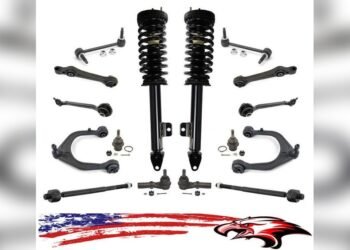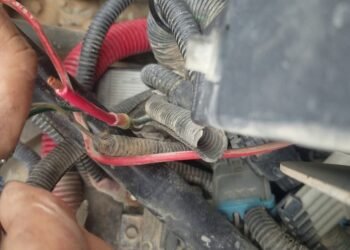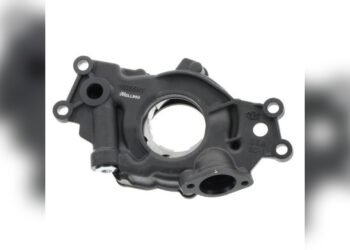Transmission fluid leaks can cause serious problems for your vehicle. They are often a sign of underlying issues.
Understanding these leaks can save you from costly repairs. Transmission fluid keeps your car’s transmission running smoothly. It lubricates, cools, and provides hydraulic pressure. A leak means your transmission may not work properly. You might notice red or brown puddles under your car.
Strange noises or shifting issues can also be signs. Ignoring these leaks can lead to bigger problems. Fixing them early can save you money and stress. This guide will help you understand the causes of transmission fluid leaks. It will also offer tips on how to spot and address them. Keep reading to protect your vehicle and wallet.
Introduction To Transmission Fluid Leaks
Transmission fluid leaks can spell trouble for your vehicle. They may lead to bigger issues if not addressed promptly. This section introduces transmission fluid leaks and their effects.
Importance Of Transmission Fluid
Transmission fluid keeps the transmission system running smoothly. It lubricates the moving parts inside the transmission. This reduces friction and prevents overheating. Without enough fluid, the transmission may wear out faster.
Common Causes Of Leaks
Several factors can cause transmission fluid leaks. One common cause is worn-out seals. These seals can crack and allow fluid to escape. Another cause is a damaged transmission pan. If the pan gets hit by debris, it can develop holes. Loose or broken drain plugs can also lead to leaks. Over time, these parts may wear out and need replacement.
Improper installation of parts can cause leaks. If parts are not fitted correctly, they may not seal properly. This allows fluid to seep out. Regular maintenance can help spot these issues early. Always check for puddles under your vehicle. This may indicate a leak.
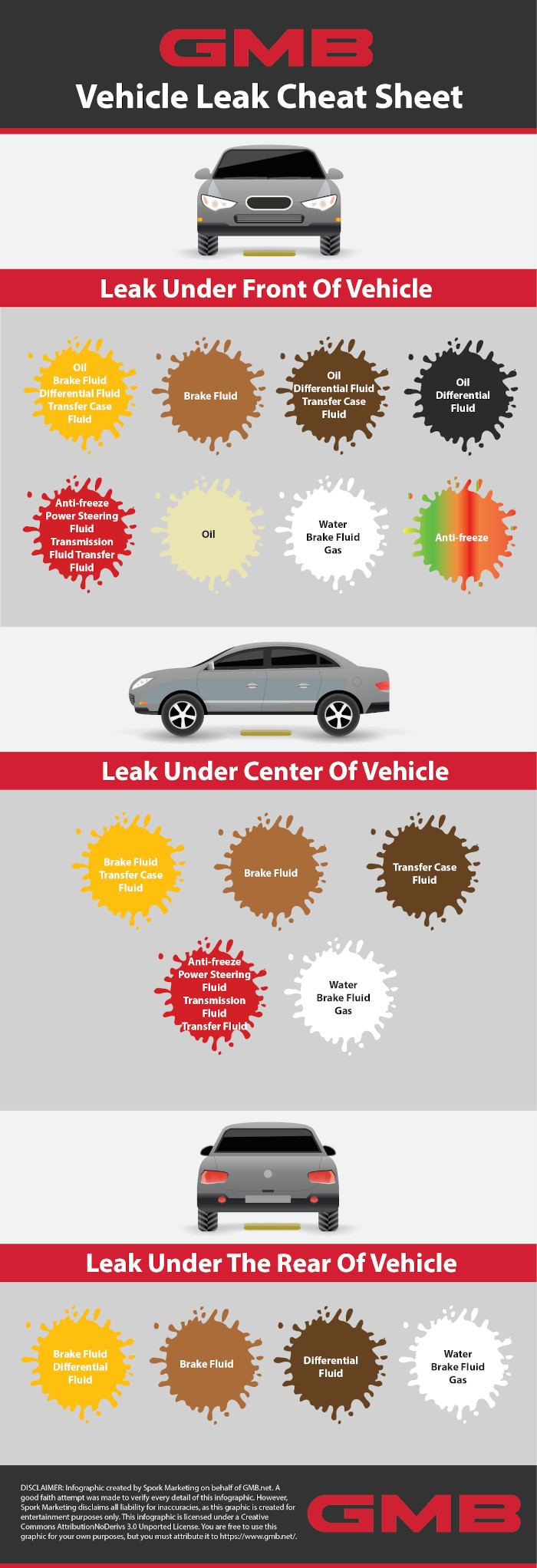
Credit: gmb.net
Signs Of A Transmission Fluid Leak
Transmission fluid leaks can cause major problems for your vehicle. Recognizing the signs early can save you from costly repairs. Here are some common signs that indicate you might have a transmission fluid leak.
Visible Fluid Puddles
One of the most obvious signs of a transmission fluid leak is visible fluid puddles. Check the ground where your car is parked. If you see red or brown puddles, it’s likely transmission fluid. The fluid can also be pinkish. This is a clear sign that you need to check your transmission.
Transmission Slipping
Another sign of a transmission fluid leak is transmission slipping. You may notice your car struggling to stay in gear. Sometimes, the car may randomly shift gears. This can happen because the transmission fluid level is low. Low fluid levels make it hard for the transmission to work properly.
| Signs | Description |
|---|---|
| Visible Fluid Puddles | Red or brown puddles under the car |
| Transmission Slipping | Car struggles to stay in gear |
Regularly check for these signs to avoid bigger issues. If you notice any of them, take your car to a mechanic. Early detection can save you a lot of money and trouble.
Checking Transmission Fluid Levels
Checking transmission fluid levels is crucial for your vehicle’s health. Regular checks can prevent major transmission issues. It ensures smooth gear shifting and prolongs the transmission life. Here’s how you can check your transmission fluid levels effectively.
Locating The Dipstick
First, find the transmission fluid dipstick. It’s usually near the engine. Look for a handle labeled “Transmission” or “ATF.” The dipstick might have a bright color. This makes it easier to spot. Your car’s manual can help if you are unsure.
Interpreting Fluid Color And Smell
Next, pull out the dipstick and check the fluid color. Healthy transmission fluid is usually red or pink. If it looks brown or black, it might be time for a change. The fluid should also smell sweet. A burnt smell indicates possible issues. If you see particles in the fluid, consult a mechanic immediately.
Identifying Leak Locations
Transmission fluid leaks can cause significant damage. Identifying the leak location is crucial for preventing further issues. In this section, we’ll explore common areas where transmission fluid leaks can occur. Knowing where to look can help you act quickly.
Inspecting Transmission Pan
The transmission pan is a common leak source. It sits at the bottom of your transmission. To inspect it, slide under your vehicle. Look for red fluid around the edges of the pan. A loose or damaged pan can cause leaks. Also, check the bolts. They should be tight but not over-tightened.
Sometimes, the pan gasket wears out. This gasket seals the pan to the transmission. If it’s cracked or damaged, it will need replacement. Ensure the pan is not dented or corroded.
Examining Seals And Gaskets
Seals and gaskets are critical for preventing leaks. Over time, they can wear out. Check the input and output shaft seals. These seals are located where the transmission connects to the driveshaft.
Look for fluid around these connection points. Another key area is the front seal, located behind the torque converter. This seal prevents fluid from leaking from the front of the transmission. If you see fluid in the bell housing, the front seal might be the issue.
Gaskets between different components can also leak. Inspect the gasket between the transmission and the engine. Any fluid here indicates a potential gasket issue.
Temporary Fixes For Transmission Leaks
Transmission fluid leaks can cause serious damage. It is essential to address them quickly. Sometimes, you need a temporary fix before seeing a mechanic. These solutions can help stop leaks for a short time. They are not long-term solutions. Let’s look at some common temporary fixes.
Using Transmission Stop Leak Products
Transmission stop leak products can help. These products seal small leaks. They work by swelling the seals inside the transmission. This can create a temporary barrier. It stops fluid from leaking out. Follow the product instructions carefully. Add the product to your transmission fluid. Check if the leak stops. If the leak persists, seek professional help. Remember, this is a temporary solution.
Tightening Loose Bolts
Loose bolts can cause leaks. Check the bolts on your transmission pan. Use a wrench to tighten them. Do not over-tighten the bolts. This can damage the threads. Tightening bolts can stop small leaks. If the leak continues, you may have other issues. Inspect the area around the bolts. Look for any signs of damage. If you find damage, consult a mechanic. Tightening bolts is a simple, temporary fix.

Credit: iconicperformance.com
Permanent Repair Solutions
Transmission fluid leaks can be annoying and damaging. For a long-lasting fix, you need permanent repair solutions. These solutions prevent future leaks and ensure your vehicle runs smoothly. Here, we will discuss two main methods: replacing damaged seals and fixing the transmission pan.
Replacing Damaged Seals
One common cause of transmission fluid leaks is damaged seals. These seals keep the fluid inside the transmission. Over time, they can wear out or break.
To replace a damaged seal, follow these steps:
- Identify the leaking seal.
- Drain the transmission fluid.
- Remove the old seal carefully.
- Install a new seal of the same type.
- Refill the transmission with fresh fluid.
Replacing damaged seals is a reliable way to stop leaks. It ensures the fluid stays where it should be. Seals are essential for your transmission’s health.
Fixing Transmission Pan
The transmission pan holds the fluid at the bottom of the transmission. A damaged or loose pan can cause leaks. Fixing this issue involves checking the pan and its gasket.
Steps to fix a transmission pan:
- Inspect the pan for cracks or damage.
- Tighten any loose bolts securing the pan.
- Replace the pan gasket if it is worn out.
- Refill the transmission fluid.
A new gasket creates a tight seal and prevents leaks. Make sure the pan is in good condition. Fixing the transmission pan is a straightforward solution.
Both methods are effective for permanent repairs. They keep your transmission fluid where it belongs. Your vehicle will run better and longer with these fixes.
When To Seek Professional Help
Transmission fluid leaks can lead to serious damage. Seek professional help if you notice red fluid under your car. Ignoring this issue can result in costly repairs.
Transmission fluid leaks can be tricky. Sometimes, the problem is minor. Other times, it needs expert attention. How do you know when to call a professional? Here are some scenarios and considerations.Complex Leak Scenarios
Simple leaks may not need a mechanic. But complex leaks do. If fluid pools under your car, it’s a serious issue. This could mean a broken seal or a cracked transmission pan. Both need professional repair. Another sign is if the transmission fluid is dark or smells burnt. This means it is contaminated. Contaminated fluid can damage the transmission. A mechanic can flush the system and replace the fluid.Cost Considerations
Hiring a professional costs money. But ignoring a leak can cost more. Fixing a small leak is cheaper than replacing a whole transmission. Acting early saves money in the long run. Some repairs are simple, like replacing a gasket. Others are complex, like fixing internal parts. A mechanic can give you a detailed estimate. This helps you understand the costs involved. Seeking professional help ensures your car gets the right fix. It also gives you peace of mind. Don’t wait. Address transmission fluid leaks promptly. “`Preventing Future Leaks
Transmission fluid leaks can cause significant damage to your vehicle. Preventing future leaks is essential for maintaining your car’s health. By following some simple steps, you can avoid costly repairs and keep your transmission system in top shape.
Regular Maintenance Tips
Regular maintenance is key to preventing transmission fluid leaks. Here’s what you should do:
- Check the fluid level: Inspect the fluid level regularly. Low fluid levels can indicate a leak.
- Inspect the transmission pan: Look for any signs of damage or wear.
- Tighten bolts: Loose bolts can cause leaks. Make sure all bolts are secure.
- Replace the gasket: Gaskets can wear out over time. Replace them as needed.
- Clean the area: Dirt and debris can cause damage. Keep the area around the transmission clean.
Choosing The Right Transmission Fluid
Using the correct transmission fluid is crucial. Here’s how to choose the right one:
- Consult the manual: Your vehicle’s manual will specify the right fluid type.
- Check compatibility: Ensure the fluid is compatible with your transmission system.
- Consider the climate: Different fluids perform better in different temperatures.
- Look for additives: Some fluids contain additives that can prevent leaks.
Choosing the right fluid helps maintain your transmission and prevent leaks.
By following these tips, you can prevent future transmission fluid leaks and keep your vehicle running smoothly. Regular maintenance and the right fluid are essential. Keep an eye on your transmission system and address any issues promptly.
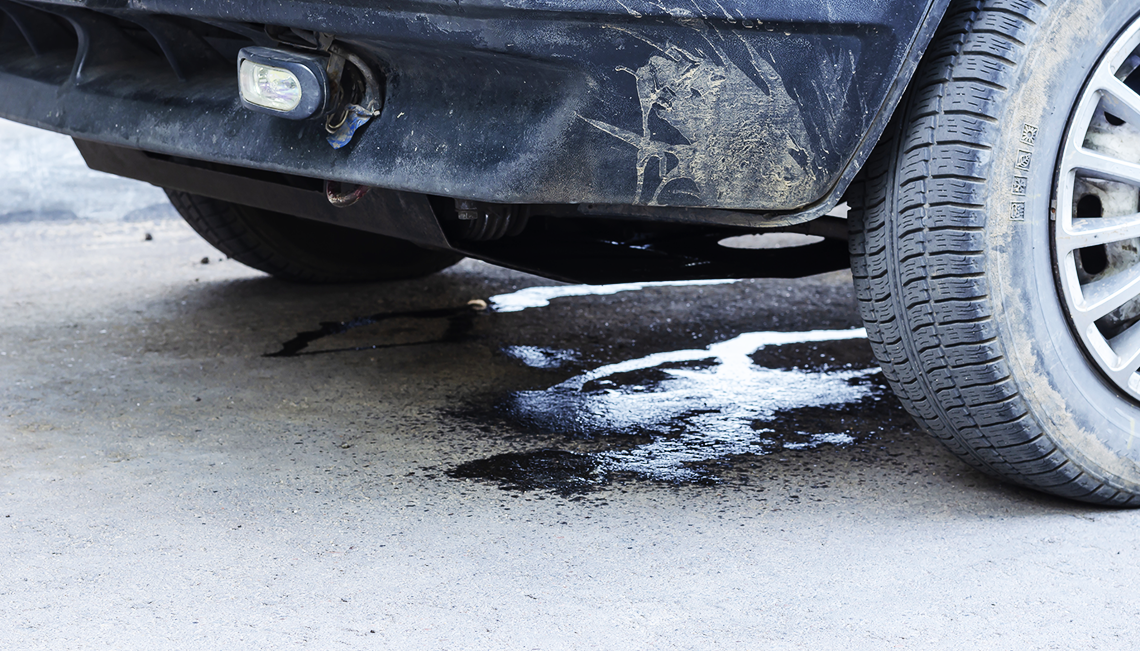
Credit: blog.rainbowmuffler.net
Frequently Asked Questions
What Causes Transmission Fluid Leaks?
Transmission fluid leaks can be caused by damaged seals, loose pan bolts, or cracked fluid lines.
How Do I Identify A Transmission Fluid Leak?
Look for red or brown fluid under your car. Check the transmission fluid level regularly.
Can I Drive With A Transmission Fluid Leak?
It’s not safe to drive with a transmission fluid leak. It can lead to serious damage.
How Much Does It Cost To Fix A Transmission Fluid Leak?
The cost to fix a transmission fluid leak can range from $100 to $500, depending on the issue.
How Often Should I Check Transmission Fluid Levels?
Check your transmission fluid levels every month. Regular checks help prevent leaks and maintain performance.
Conclusion
Detecting transmission fluid leaks early is crucial for vehicle health. Regular inspections and timely repairs prevent costly damages. Check for red or brown puddles under your car. Listen for unusual noises and observe gear shifts. Addressing leaks promptly ensures smoother drives and prolongs your transmission’s life.
Stay proactive and keep your vehicle in top condition. Regular maintenance saves money and hassle in the long run. Keep an eye out, stay informed, and drive safe.


